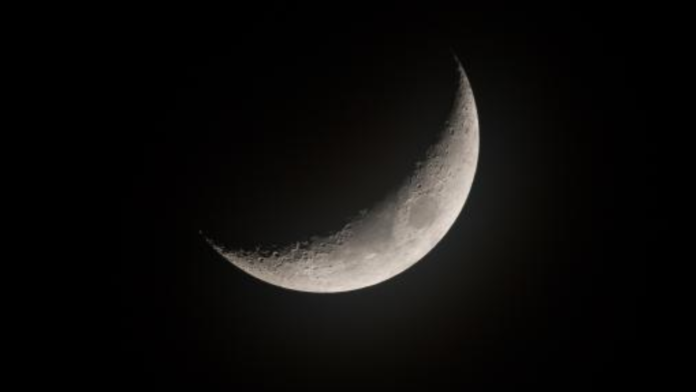The National Space Research and Development Agency (NASRDA) said that Nigeria would likely witness its first astronomical lunar crescent on Feb.28.
Dr Felix Ale, the director of Media and Corporate Communications of NASRDA, said this in a statement on Saturday.
He said that the lunar crescent had been calculated to occur at 1:45 A.M. West African Time (WAT).
Ale stated that the predicted time of 1:45 A.M., also known as the Crescent Zero Hour, would be when the crescent could be seen under perfect atmospheric conditions with the aid of optical instruments like binoculars or telescopes.
“The crescent will become visible to the naked eye on the evening of Friday, 28th February 2025, between 6:17 PM and 7:35 PM across different locations in Nigeria.
“Maiduguri will be the first city to witness the young lunar crescent from 6:17 PM to 6:48 PM, followed by Yola, Adamawa State, from 6:21 PM to 6:51 PM.
“Damaturu, Yobe, will follow from 6:22 PM to 6:53 PM, while Kano, Katsina, Jos, and Kaduna will experience the first lunar crescent between 6:38 PM and 7:12 PM.
“The sunset and moonset will occur between 6:35 PM and 7:12 PM, 6:38 PM and 7:15 PM, 6:35 PM and 7:11 PM, and 6:40 PM and 7:17 PM, respectively.
“Enugu will experience the lunar crescent between 6:42 PM and 7:32 PM, with sunset and moonset at about 6:42 PM and 7:18 PM,” he said.
He predicted that in the FCT, the first lunar crescent would appear between 6:44 PM and 7:15 PM, with sunset and moonset at about 6:44 PM and 7:20 PM.
The last cities to experience the lunar crescent, he said, would be Lagos and Abeokuta, between the hours of 6:59 PM and 7:30 PM.
Ale stated that other cities across the federation would experience the lunar crescent at different times within the estimated visibility window of 6:17 PM and 7:35 PM on the same day.
He said, “For a clear sighting of the first lunar crescent, observers are to use optical aids where necessary and observe under clear atmospheric conditions.
“Observers should position themselves in locations with an unobstructed view of the western horizon after sunset.”
He added that the scientific report provided precise predictions on the lunar crescent across locations in the country.
According to him, the report ensured accuracy for those who relied on lunar observations for religious, cultural, and scientific purposes.
The space agency encouraged researchers, scholars, and religious groups to utilise the findings, adding that anyone requiring additional data for further analysis could visit the official website at www.nasrda.gov.ng.
Dr. Bonaventure Okere, Director of the Centre for Basic Space Science and Astronomy (CBSSA), an activity centre of NASRDA, said that it was regarded as the first stage of the moon, hence the new crescent.
Okere explained that the appearance of the new crescent was highly significant in Islam, as it was used to determine certain rites and practices, such as the beginning of the Ramadan fast.
“The Islamic religion uses moon phases for their rites, while astronomers study the cycle of the rising and setting of the moon to determine moon days, which usually last 28 days.
“Astronomers use the moon cycle to generate the lunar calendar and understand the part of the moon visible each day,” he said.
(NAN)



